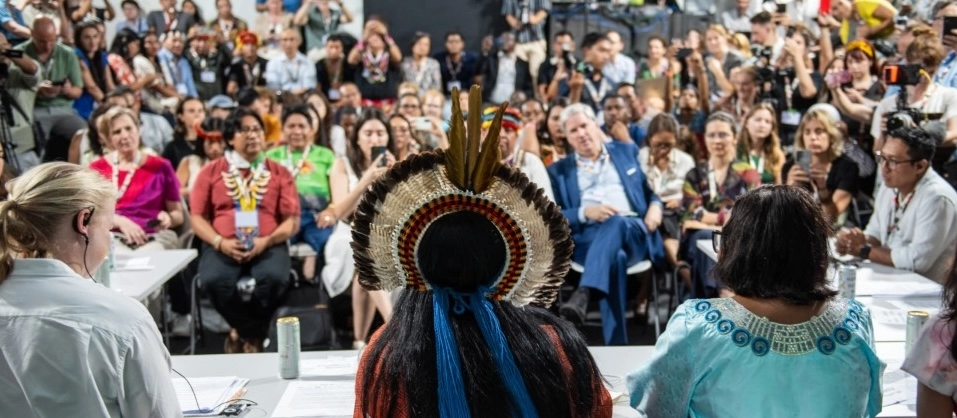Measuring what matters: the Greenhouse Impact Framework

As we hurtle past the mid-way point of this most decisive of decades, it is clear that organisations and decision-makers need more than good intentions to change the tide on the climate crisis. To shift the dial, we need measurable results linked to strategic purpose.
Understanding this critical need to move beyond outputs and towards outcomes, we have developed a bespoke Greenhouse Impact Framework, designed to quantify and evaluate the success of our campaigns on climate and nature.
This structured approach to impact measurement will sit at the core of Greenhouse’s programmes for clients globally, as we seek to anchor every campaign in the actions and goals that our clients are looking to deliver.
Why measure impact?
Communications campaigns often struggle to demonstrate concrete results beyond metrics like media mentions, social engagement, website sessions and email subscribers. For climate communications to be truly effective, we made the decision a few years ago to shift away from output-based KPIs and towards outcome-driven strategies.
As our recent blog post about AI in communications strategies outlined, this means starting not with channels or content types, but with the business results that our clients are seeking to influence. Our Impact Framework bridges this gap by connecting communications activities directly to meaningful outcomes.
The Greenhouse Impact Framework: a 6-step approach
Our framework follows six interconnected steps to deliver maximum impact for any communications work:
1. Objective setting
We begin by establishing clear, specific objectives that align with your organisation’s mission and environmental goals. These objectives provide direction and purpose for all subsequent communications activities.
2. Agreeing intended impact
Here, we articulate the precise environmental change we aim to achieve. This could range from policy reform and corporate behaviour change to community action or shifts in citizen-level perception around specific environmental issues.
3. Audience analysis
We identify and analyse specific stakeholders who can help realise your intended impact. This includes understanding their current knowledge, attitudes, motivations and behaviours related to your cause and prioritising according to their relation to your intended impact.
4. Activity mapping
Based on objectives, intended impact and audience insights, we develop strategic communications activities designed to drive change. These may include media campaigns, creative activations, stakeholder engagement, in-person events, social media activity, thought leadership, speaking opportunities, paid media and digital advertising.
5. Measuring what matters
From the outset, we establish relevant quantitative and qualitative metrics to track progress. These ensure alignment on the results we’re seeking to deliver and might include real-world commitments, awareness metrics, engagement measurements and conversion activities that connect directly to your end goals.
6. Monitoring overall impact
Finally, we evaluate how these elements combine to create meaningful change – both now and in the longer-term. This could be policy changes, funds raised, system transformation or jobs created. This assessment helps refine future strategies and opportunities to create greater impact.
What our impact framework means in practice: benefits for our clients
We believe that this approach supports our clients and, ultimately, the wider climate movement to focus on measuring what is truly meaningful. It means we focus on creating greater impact and real-world outcomes at a time when it is needed most.
By tailoring our framework to the needs of the organisations we work with and personalising the impact framework, we can support them to deliver:
- An evidence-based approach to campaign planning and execution.
- A clear connection between communications efforts and the business goals – that is, the impact they are looking to achieve.
- The ability to demonstrate ROI for individual campaigns and ongoing communications programmes.
- A long-term view of the activities that will drive most impact among specific audience groups.
The future: less noise, more impact
We believe that effective communication is essential to solving our planet’s most pressing environmental challenges. The Greenhouse Impact Framework represents our commitment to not just telling compelling stories, but ensuring those stories translate into measurable positive change for people and the planet.
We look forward to putting this framework into place with clients committed to making a real difference. By measuring what truly matters, we can ensure our work truly contributes to a healthier, thriving and more just world – and that we are creating less noise, with more impact.
Photo by Vishal Banik on Unsplash



